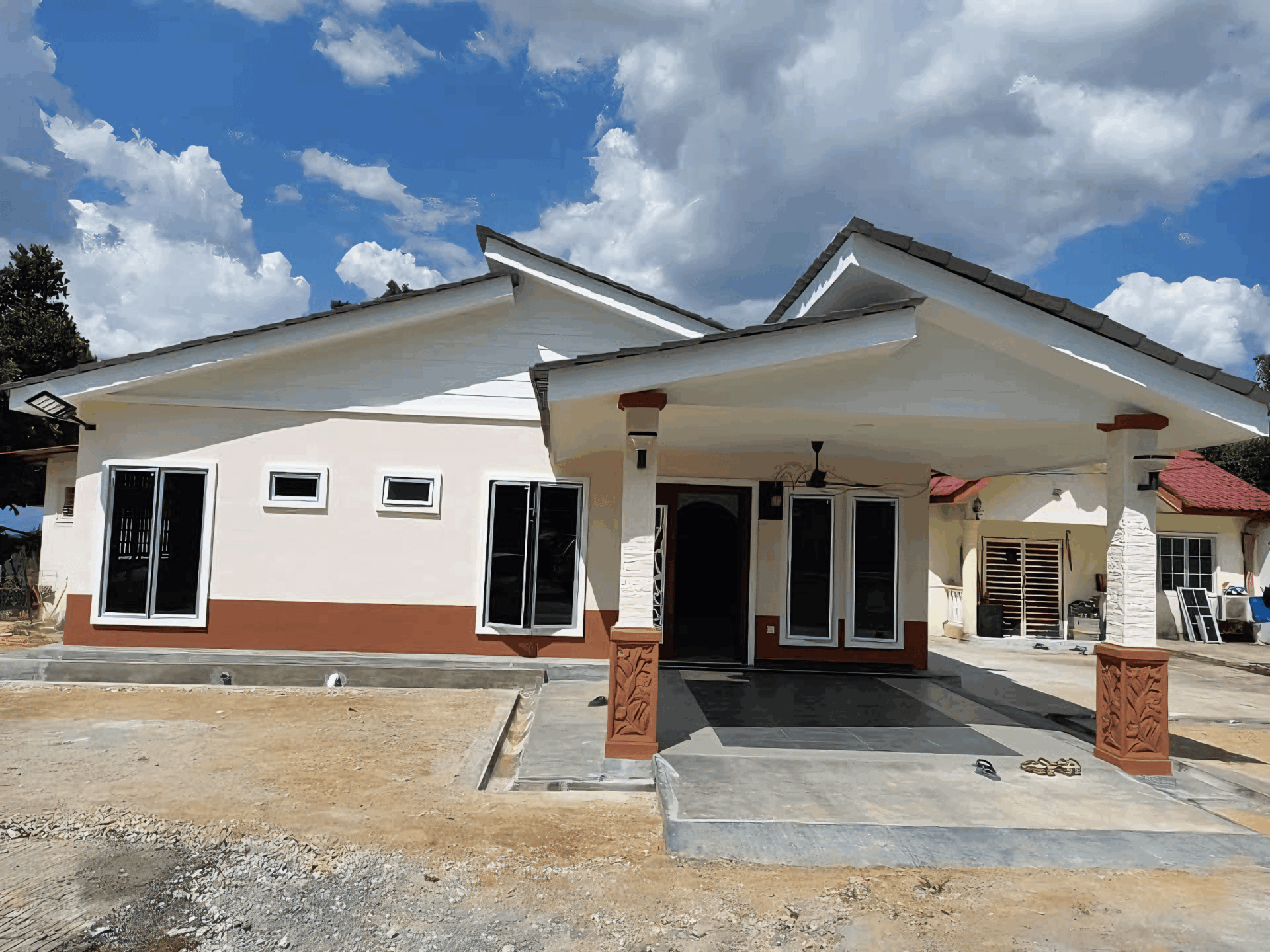The Importance of Basic Infrastructure in House Construction
In the intricate tapestry of home building, where dreams often take the form of blueprints and aspirations rise from mere soil, the significance of basic infrastructure cannot be overstated. It serves as the backbone of any residential project, providing the essential framework that hosts everything from the foundations to modern amenities. While the aesthetic appeal and design innovation of a home often steal the spotlight, it is the hidden elements—roads, utilities, drainage systems, and structural supports—that lay the groundwork for a safe, sustainable, and functional living space.
As our societies evolve and urban landscapes continue to transform, the allure of stylish homes can sometimes overshadow the more mundane details that ensure longevity and stability. However, neglecting these foundational aspects can result in costly errors, unsafe conditions, and ultimately, the collapse of a homeowner’s dreams. From mitigating environmental challenges to ensuring access to basic services, the role of infrastructure is both pivotal and far-reaching.
In this article, we will explore the multifaceted importance of basic infrastructure in house construction. We will delve into its impact on safety, functionality, and environmental sustainability, while also examining how comprehensive planning and investment in these fundamental elements can enhance the quality of residential projects. By understanding the vital role of infrastructure, we can foster a greater appreciation for the unsung heroes of house construction, ultimately paving the way for homes that are not only beautiful but also built to endure.
Understanding the Foundations: The Role of Basic Infrastructure in Sustainable Housing
Basic infrastructure forms the backbone of any successful housing initiative, transforming mere structures into sustainable homes that thrive within their communities. This infrastructure encompasses essential services such as water supply, sewage management, energy provision, and waste disposal. Each element works in concert to create a harmonious living environment, significantly enhancing the quality of life for residents. When these components operate effectively, they not only support the households but also foster social equity and environmental health.
Investing in robust infrastructure is crucial for reducing long-term costs and promoting energy efficiency. Consider the impact of sustainable energy solutions such as solar panels and wind turbines, which are becoming increasingly integrated into modern housing designs. By utilizing renewable resources, homeowners can lower their utility bills while minimizing their carbon footprint. Key factors that contribute to this transformation include:
- Accessibility: Efficient transport and storage of materials
- Reliability: Consistent energy supply and waste management systems
- Aesthetics: Infrastructure integrated into landscape design
Furthermore, proper sanitation and clean water resources are integral to safeguarding public health, especially in densely populated areas. The integration of eco-friendly drainage systems, rainwater harvesting, and greywater recycling also supports the sustainability agenda. The following table illustrates the potential benefits of investing in quality infrastructure for housing:
| Infrastructure Element | Benefit |
|---|---|
| Water Supply | Improved health and hygiene |
| Waste Management | Reduced environmental pollution |
| Energy Sources | Lower energy costs |
Ultimately, the interplay between housing and basic infrastructure is vital for fostering resilient communities. Through thoughtful planning and development, cities can ensure that all residents have access to the necessities that promote well-being, sustainability, and economic vitality. Emphasizing this interconnectedness will lead to stronger, more sustainable neighborhoods where people can thrive together.

Essential Utilities: Ensuring Reliable Water and Power Supply for Long-Lasting Homes
Building a home involves more than just creating aesthetically pleasing spaces; it is essential to ensure that foundational utilities are integrated seamlessly. Reliable water and power supply not only enhance the functionality of a house but also contribute to its longevity. Incorporating modern plumbing and electrical systems can maximize energy efficiency and minimize potential disruptions, making them vital considerations during the construction phase.
When planning for essential utilities, homeowners should consider the following factors:
- Source Quality: Ensure access to clean water from reputable sources to avoid future contamination issues.
- Infrastructure Maintenance: Regular checks and maintenance routines for pipes and wiring can prevent emergencies and costly repairs.
- Energy Efficiency: Opting for energy-efficient appliances and renewable energy sources can reduce long-term costs and environmental impact.
To illustrate the impact of well-planned utility infrastructure, here is a simple comparison table highlighting traditional versus modern systems:
| Aspect | Traditional Systems | Modern Systems |
|---|---|---|
| Water Supply | Manual pumps | Automated filtration and pumps |
| Electricity | Standard wiring | Smart grid technology |
| Maintenance | Periodic checks | Real-time monitoring |

Safety First: The Impact of Infrastructure on Structural Integrity and Disaster Preparedness
When constructing a house, the integrity of its basic infrastructure plays a pivotal role in ensuring safety and longevity. A well-designed framework can withstand natural disasters, significantly reducing the risk of structural failure. Employing high-quality materials, adhering to building codes, and using skilled labor are fundamental components that contribute to a resilient structure. This foundation not only supports the physical elements of a house but also fortifies the occupants’ peace of mind.
In addition to physical resilience, a house’s infrastructure can influence emergency preparedness. Proper drainage systems, for instance, can mitigate flooding risk during heavy rainfall, while reinforced walls can withstand seismic shocks. The integration of modern technology, such as alarms and surveillance systems, adds an extra layer of security. These technological enhancements can be particularly beneficial in areas prone to specific disasters, making preparedness a seamless part of daily living. Consider the following factors that merge safety with functionality:
- Material Quality: Durable materials like concrete and steel outperform less sturdy alternatives.
- Building Codes: Compliance with local regulations ensures safety standards are met.
- Design Flexibility: Custom designs can accommodate local climate challenges and hazards.
| Infrastructure Feature | Disaster Preparedness Benefit |
|---|---|
| Strong Foundation | Resilience against earthquakes and floods |
| Effective Drainage | Prevention of water accumulation and flooding |
| Wind-resistant Design | Protection during severe storms and hurricanes |
Ultimately, prioritizing basic infrastructure in house construction is not just about aesthetic appeal; it’s about building a secure and sustainable environment. Specialized features enhance both the structural integrity and disaster preparedness, ensuring that homes can withstand the tests of nature. By investing in robust infrastructure, homeowners not only protect their property but also contribute to the overall safety and resilience of their communities.

Future-Proofing Homes: Innovative Infrastructure Solutions for Modern Living
As we embrace the future, the integration of advanced technologies and sustainable practices into home construction is becoming increasingly vital. Basic infrastructure components, such as plumbing, wiring, and HVAC systems, serve as the backbone of any modern home. These systems should not only meet today’s standards but also adapt to the evolving needs of tomorrow’s households. Evolving needs may include energy efficiency, ease of maintenance, and the incorporation of smart technology, shaping how we live and interact with our environments.
With the rise of smart homes, the emphasis on infrastructure that supports connectivity cannot be overstated. This entails installing fiber-optic lines for faster internet, as well as ensuring compatibility with existing smart home devices. Homeowners can enjoy seamless connectivity and automation features that improve daily living. Consider implementing the following infrastructural elements to elevate modern living:
- Eco-friendly materials that enhance sustainability
- Modular wiring systems for easy upgrades
- Energy-efficient HVAC that adapts to variable climates
Additionally, infrastructure planning should include resilient solutions that can withstand climate change impacts. Flood-resistant foundations, storm-proof roofing, and energy storage systems are essential for long-term viability. Below is a simple comparison table showcasing effective infrastructural solutions and their benefits:
| Infrastructure Solution | Key Benefits |
|---|---|
| Rainwater Harvesting System | Conserves water and reduces utility costs |
| Solar Panel Installation | Provides renewable energy and lowers dependency on grids |
| Smart Home Integration | Enhances convenience and energy management |
Q&A
Q: What is basic infrastructure in the context of house construction?
A: Basic infrastructure refers to the essential components that support a home’s functionality and safety. This includes water supply systems, sewage disposal, electrical wiring, heating and cooling systems, and structural integrity. These elements form the backbone of a house, ensuring it meets daily living standards.
Q: Why is basic infrastructure considered crucial in house construction?
A: Without solid basic infrastructure, a house cannot function properly. It affects everything from the comfort of the inhabitants to long-term durability. Wise investment in reliable infrastructure can prevent costly repairs and maintenance down the road while enhancing the property’s overall value.
Q: How does poor infrastructure impact homeowners?
A: Poor infrastructure can lead to myriad problems, including water leaks, electrical fires, and inadequate plumbing. Such issues not only cause discomfort and inconvenience but can also pose serious safety risks. Additionally, homes with compromised infrastructure often have lower resale values and require more frequent repairs.
Q: What role does infrastructure play in sustainability?
A: Sustainable infrastructure reduces a home’s environmental impact and enhances energy efficiency. For example, well-designed insulation and efficient heating systems lower energy consumption, while effective water management systems promote conservation. Incorporating sustainable practices in basic infrastructure helps create homes that are kinder to the planet.
Q: Are there specific regulations or codes that address basic infrastructure in house construction?
A: Yes, most regions have building codes that govern the standards for basic infrastructure to ensure safety and reliability. These codes are designed to protect homeowners and the community at large by enforcing minimum requirements for construction practices that relate to structural integrity, plumbing, and electrical work.
Q: How can homeowners verify the quality of a home’s infrastructure?
A: Prospective homeowners can hire professional inspectors to conduct a thorough assessment before purchasing a property. Inspectors will evaluate critical infrastructure components, identifying potential issues related to plumbing, electrical systems, and structural conditions, ensuring peace of mind for the buyer.
Q: What are some innovative trends in basic infrastructure for new home constructions?
A: Current trends include the integration of smart home technologies, which enhance the functionality of basic infrastructure. Features like programmable thermostats, automated lighting, and leak detection systems are becoming more common. Additionally, builders are focusing on using sustainable materials and systems that promote energy efficiency and lower environmental impact.
Q: How can builders ensure they are incorporating robust infrastructure in their projects?
A: Builders can prioritize thorough planning and collaboration with experienced engineers and architects. Utilizing modern materials and technologies, adhering to building codes, and conducting regular inspections throughout construction can further ensure that the infrastructure is durable and meets all necessary standards.
Q: What are some common misconceptions about basic infrastructure in house construction?
A: A prevalent misconception is that basic infrastructure is merely an afterthought or secondary to aesthetics. In reality, while a beautiful home exterior can attract buyers, it is the strong infrastructure that ensures safety and long-term functionality. Additionally, some believe that all homes inherently possess sufficient infrastructure, when in reality, many older homes may require significant updates to meet current standards.
Q: In what ways can basic infrastructure contribute to the overall value of a home?
A: Comprehensive and reliable basic infrastructure can significantly enhance a home’s market value. Potential buyers are often willing to pay a premium for properties that offer upgraded plumbing, modern electrical systems, and energy-efficient features. Furthermore, homes with robust infrastructures tend to experience fewer issues, making them more appealing in a competitive real estate market.
In Retrospect
the significance of basic infrastructure in house construction cannot be overstated. While the allure of aesthetic details and cutting-edge designs is undeniable, it is the foundational elements—plumbing, electrical systems, and solid structural support—that truly transform a house into a home. As we continue to advance in the realms of architectural innovation and sustainable practices, let us not forget the essential roles these basic infrastructures play in ensuring safety, comfort, and functionality for generations to come. By investing time and resources into these fundamental aspects, we not only build strong and resilient structures but also foster communities that thrive. As future architects, builders, and homeowners, let’s champion the importance of these building blocks, for they are the quiet heroes of every dwelling, echoing through walls and under roofs, reminding us that a home is not merely a space, but a sanctuary built on solid ground.


